Are you planning a cultural tour in Rwanda? Well, read more. Known as a country of a thousand hills, Rwanda is one of the most fascinating countries to visit in Africa. Whereas gorilla trekking is the most popular tourist attraction in Rwanda, the country is not all about apes. Rwanda is an excellent destination for mountain hiking, game drives, biking, nature walks and cultural tours. The cultural practices of the indigenous people were passed on from one generation to another through cultural ceremonies, language, stories, dressing style and a kingdom that has now been abolished.
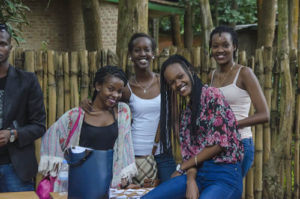 Before the genocide in 1994, there were people who attempted to find distinctions between the Hutus, Tutsi and minority Twa. It was said that the Tutsi’s were mostly pastoralists while the Hutus where cultivators. Other distinctions were invented to help the Belgium colonialist govern the people but the reality is that the Tutsi and Hutu are essentially the same people. That becomes clear when you attempt to compare their looks, ways of life and culture to other tribal groups in the neighboring countries
Before the genocide in 1994, there were people who attempted to find distinctions between the Hutus, Tutsi and minority Twa. It was said that the Tutsi’s were mostly pastoralists while the Hutus where cultivators. Other distinctions were invented to help the Belgium colonialist govern the people but the reality is that the Tutsi and Hutu are essentially the same people. That becomes clear when you attempt to compare their looks, ways of life and culture to other tribal groups in the neighboring countries
Modernization, the introduction of the western culture, intermarriages and immigration has changed the lifestyle of the people of Rwanda. Many Rwandan nationals fled the country during the 1960’s and 1990’s to settle in neighboring countries. They now live a mixed lifestyle even after returning to the country. In an attempt to preserve the culture of the Banyarwanda, the government and individuals have invested in cultural sites that will remain a constant reminder of the important cultural norms and values of the people.
The Cultural attractions in Rwanda include visiting genocide memorial sites, cultural villages and artisan center. While visiting the cultural sites, expect to have close encounters with the people as watch traditional dance performances, folk songs and listen to stories about the former kingdoms. Some interesting cultural practices among the Banyarwanda include evening stories, riddles, folk-stories 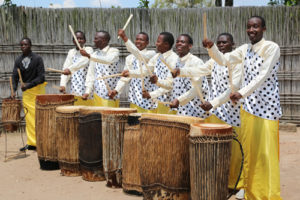 and proverbs which is organized close to a fireplace by the elderly. A mother would remain alone in the house for 7 days after giving birth. The cultural lock-down would only end after the child was given a name.
and proverbs which is organized close to a fireplace by the elderly. A mother would remain alone in the house for 7 days after giving birth. The cultural lock-down would only end after the child was given a name.
We will be discussing the major cultural sites in Rwanda and activities in the country in the next chapters. You will note that most of the tourist attractions in Rwanda also have cultural elements. For more information about the cultural sites in Rwanda, read our article about the top things to do in Kigali. You might also get more information from our 1 day Kigali tour package.
Cultural tours in Rwanda
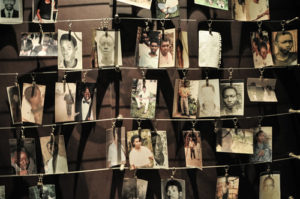 Kigali Genocide Memorial: This is arguably the most visited museum in Rwanda. It was built in memory of about 250,000 people who were killed during the Rwanda genocide. The Museum is divided into 3 major areas – One remembering the children killed, another for the adults and one focusing on genocides which occurred in other parts of the world. Visiting this museum will help you understand the events leading to and after the genocide. The government hopes that the museum will act as a constant reminder of the cruelty shown during the genocide so that younger generations never allow it to happen again.
Kigali Genocide Memorial: This is arguably the most visited museum in Rwanda. It was built in memory of about 250,000 people who were killed during the Rwanda genocide. The Museum is divided into 3 major areas – One remembering the children killed, another for the adults and one focusing on genocides which occurred in other parts of the world. Visiting this museum will help you understand the events leading to and after the genocide. The government hopes that the museum will act as a constant reminder of the cruelty shown during the genocide so that younger generations never allow it to happen again.
National History Museum (Kandt House Museum): Formally known as the Kandt House Museum, the National History Museum is one of the most important cultural and historical sites in 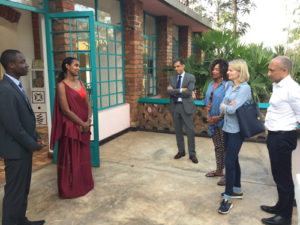 Rwanda. It was initially named after Dr. Richard Kandt and was the first modern building in Rwanda. Kandt was the first governor of Rwanda during German colonial rule. The Museum is divided into three parts – The first exhibition area shows how life was before the country was colonized. The second part describes life during the colonial era while the third part depicts life after Rwanda got independence. Visit this Museum to check out rare photos of Rwanda and German World War 1 photos. The museum also showcases the wildlife, vegetation and geological features in the country.
Rwanda. It was initially named after Dr. Richard Kandt and was the first modern building in Rwanda. Kandt was the first governor of Rwanda during German colonial rule. The Museum is divided into three parts – The first exhibition area shows how life was before the country was colonized. The second part describes life during the colonial era while the third part depicts life after Rwanda got independence. Visit this Museum to check out rare photos of Rwanda and German World War 1 photos. The museum also showcases the wildlife, vegetation and geological features in the country.
 Kigali Fashion Week: The capital Kigali is growing fast and the people have embraced a lot of what is going on in the other cities around the world but while retaining the Rwandan swag. Kigali hosts two popular fashion festivals each year. The Kigali fashion week is organized in July while the Rwanda Cultural Fashion Week takes place in September each year. These two festivals attract some of the best local and international fashion designers. If you are lucky to be in town during these two fashion weeks, do not fail to attend them. You will get a rare opportunity to see a mix of Rwandan and international fashion products. If you are planning soon, you might want to read about what to pack for a safari in Rwanda.
Kigali Fashion Week: The capital Kigali is growing fast and the people have embraced a lot of what is going on in the other cities around the world but while retaining the Rwandan swag. Kigali hosts two popular fashion festivals each year. The Kigali fashion week is organized in July while the Rwanda Cultural Fashion Week takes place in September each year. These two festivals attract some of the best local and international fashion designers. If you are lucky to be in town during these two fashion weeks, do not fail to attend them. You will get a rare opportunity to see a mix of Rwandan and international fashion products. If you are planning soon, you might want to read about what to pack for a safari in Rwanda.
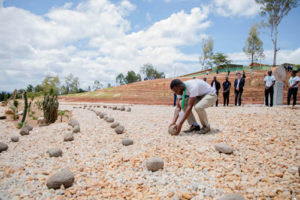 Nyanza Genocide Memorial: Another of the many genocide memorial centers commemorating those who died during the 3 months of horror in 1994. About 10,000 are buried in a mass grave at the site. Nyanza was a major killing ground during the Rwanda genocide with the Queen of Rwanda the most famous victim. Known as Queen Rosalie Gicanda, she was killed along with her attendants but was buried at the royal palace in Nyanza. The Nyanza Genocide Memorial is where most of victims are buried and is a frequent host of the yearly genocide memorial celebrations.
Nyanza Genocide Memorial: Another of the many genocide memorial centers commemorating those who died during the 3 months of horror in 1994. About 10,000 are buried in a mass grave at the site. Nyanza was a major killing ground during the Rwanda genocide with the Queen of Rwanda the most famous victim. Known as Queen Rosalie Gicanda, she was killed along with her attendants but was buried at the royal palace in Nyanza. The Nyanza Genocide Memorial is where most of victims are buried and is a frequent host of the yearly genocide memorial celebrations.
Banda Cultural Village: This interesting cultural center is found inside Nyungwe National Park – close to the park offices in Uwinka and where the Canopy walk is arranged. If you are visiting Nyungwe 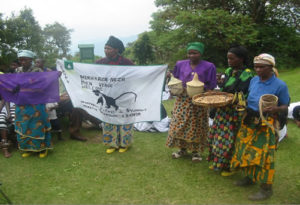 National park for nature walks and Chimp tracking, don’t forget to stop at the village. As you enter the site, you will be welcomed by Intore dancers and then escorted by a resident Guide. There is a lot to see at the village but the most interesting is observing how local medicines and traditional baskets are made. You can be called to take part in grinding maize using local tools and then help in preparing a local meal. If you are lucky, you may arrive on the day when a traditional wedding ceremony is taking place and be among the witnesses.
National park for nature walks and Chimp tracking, don’t forget to stop at the village. As you enter the site, you will be welcomed by Intore dancers and then escorted by a resident Guide. There is a lot to see at the village but the most interesting is observing how local medicines and traditional baskets are made. You can be called to take part in grinding maize using local tools and then help in preparing a local meal. If you are lucky, you may arrive on the day when a traditional wedding ceremony is taking place and be among the witnesses.
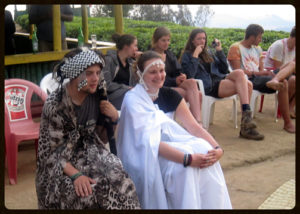 Kitabi Cultural Center: This cultural center is also found in Nyungwe Forest National Park – right at the main entrance. The last King of Rwanda built his palace here instead of using the one in Nyanza. It is one of the most visit cultural attractions in Rwanda and a favorite stopover for tourists visiting Nyungwe for chimpanzee trekking. The Center consists of several traditional huts and the King’s palace with guards. Everyone is dressed in striking traditional robes, cheerful and ready to ensure that you enjoy your time while there. A Guide will take you to see the local women making traditional baskets, beads and other souvenir for sale.
Kitabi Cultural Center: This cultural center is also found in Nyungwe Forest National Park – right at the main entrance. The last King of Rwanda built his palace here instead of using the one in Nyanza. It is one of the most visit cultural attractions in Rwanda and a favorite stopover for tourists visiting Nyungwe for chimpanzee trekking. The Center consists of several traditional huts and the King’s palace with guards. Everyone is dressed in striking traditional robes, cheerful and ready to ensure that you enjoy your time while there. A Guide will take you to see the local women making traditional baskets, beads and other souvenir for sale.
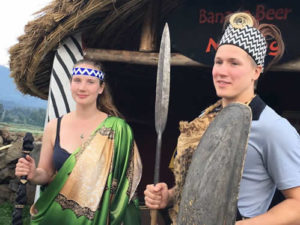 Gorilla Guardians Village: Also known as the Ibyiwacu cultural village, this is arguably the most visited cultural site in Rwanda – thanks to its close proximity to the where tourists spot mountain gorillas. The Cultural site is found in Musanze district and was founded by a former warden of the Volcanoes National Park. The warden wanted to build a cultural center that would offer employment to former poachers while also showing tourists everything good about the culture of the people.
Gorilla Guardians Village: Also known as the Ibyiwacu cultural village, this is arguably the most visited cultural site in Rwanda – thanks to its close proximity to the where tourists spot mountain gorillas. The Cultural site is found in Musanze district and was founded by a former warden of the Volcanoes National Park. The warden wanted to build a cultural center that would offer employment to former poachers while also showing tourists everything good about the culture of the people.
While at the Iby’iwacu Cultural Center, tourists can enjoy watching how the Batwa pygmies hunted, traditional Intore dancers, learn how to cook Kinyarwanda dinner or enjoy traditional beer. There is also an opportunity to dress like a King or Queen and live in a thatched palace.
Apart from learning how a typical Kinyarwanda homestead was arranged, the Village offers tourists a chance to learn about the role it has played in wildlife conservation and particularly ending poaching in the Volcanoes National Park. The Batwa performers once lived inside the volcanoes National Park. They would lay snares to catch antelopes, birds and other forest creatures. After experiencing all that is showcased inside the site, you can join others and go for a community walk in the nearby homesteads.
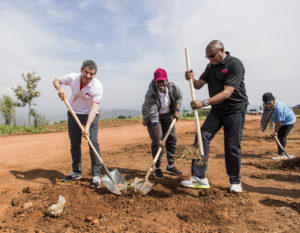 Cultural Festivals: There are several festivals that bring the people of Rwanda together and which are organized at different times of the year. “Umuganda” is organized every last Saturday of the month in Kigali to allow citizens clean up the streets. The event is compulsory for residents between 8am to 12am. No car moves in the streets and no office is opened while citizens are cleaning the city. You can join in as a tourist to help with collecting rubbish, sweeping the roads or removing unwanted weed.
Cultural Festivals: There are several festivals that bring the people of Rwanda together and which are organized at different times of the year. “Umuganda” is organized every last Saturday of the month in Kigali to allow citizens clean up the streets. The event is compulsory for residents between 8am to 12am. No car moves in the streets and no office is opened while citizens are cleaning the city. You can join in as a tourist to help with collecting rubbish, sweeping the roads or removing unwanted weed.
Another interesting festival is “Kwita izina”. 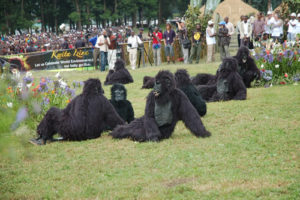 This ceremony is organized at the Volcanoes National Park every October to give a name to all newly born mountain gorillas. The event is attended by tourists, international celebrities, conservationists, the gorilla doctors, politicians and sometimes the president. Finally, there is the “Ukwibuka” which is organized every month of April. This event is commemorated not only in Rwanda but in almost every country in the world. It is the official day in which those who died during the 1994 Rwanda genocide are remembered. You don’t have to be in Rwanda to show solidarity with the people. All you need to do is visit the nearest Rwanda embassy for information on how to participate.
This ceremony is organized at the Volcanoes National Park every October to give a name to all newly born mountain gorillas. The event is attended by tourists, international celebrities, conservationists, the gorilla doctors, politicians and sometimes the president. Finally, there is the “Ukwibuka” which is organized every month of April. This event is commemorated not only in Rwanda but in almost every country in the world. It is the official day in which those who died during the 1994 Rwanda genocide are remembered. You don’t have to be in Rwanda to show solidarity with the people. All you need to do is visit the nearest Rwanda embassy for information on how to participate.
 The Kings Palace in Nyanza: This impressive palace is found in Nyanza – about 88 kilometers away from Kigali. Before and during colonialism, Rwanda had one king as cultural head. The Kings often had to deal with the challenge of pleasing the Tutsi and Hutus. Later the Kingdom was abolished entirely with the last king exiled. A modern palace was constructed for King Mutara III by the Belgium government in 1931. Mutara was the last ruling king before Kingdoms were abolished. His successor never really had power and was exiled in the United States. The palace was then turned into a museum by the government.
The Kings Palace in Nyanza: This impressive palace is found in Nyanza – about 88 kilometers away from Kigali. Before and during colonialism, Rwanda had one king as cultural head. The Kings often had to deal with the challenge of pleasing the Tutsi and Hutus. Later the Kingdom was abolished entirely with the last king exiled. A modern palace was constructed for King Mutara III by the Belgium government in 1931. Mutara was the last ruling king before Kingdoms were abolished. His successor never really had power and was exiled in the United States. The palace was then turned into a museum by the government.
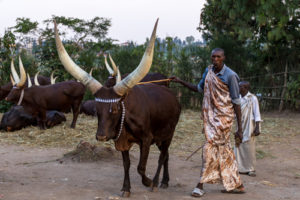 During the genocide in 1994, most of the valuable place instruments were stolen. The government has revamped the palace and added new structures, traditional materials and the “Inyambo”. The Inyambo are long-horned cattle which can be seen in many parts of Rwanda. The kings owned thousands of these cattle and they were a source of pride for the Kingdom. This palace is a popular stop-over for tourists and those on a road trip in Rwanda. One can check out the palace milk house whose female attendants were never allowed to marry. There is also the royal brewers hut and the burial ground for the royal family.
During the genocide in 1994, most of the valuable place instruments were stolen. The government has revamped the palace and added new structures, traditional materials and the “Inyambo”. The Inyambo are long-horned cattle which can be seen in many parts of Rwanda. The kings owned thousands of these cattle and they were a source of pride for the Kingdom. This palace is a popular stop-over for tourists and those on a road trip in Rwanda. One can check out the palace milk house whose female attendants were never allowed to marry. There is also the royal brewers hut and the burial ground for the royal family.
Presidential Palace Museum: This is the place to go to if you are interested in learning about the immediate event that sparked off the genocide of 1994. The Museum is found only 2 kilometers away 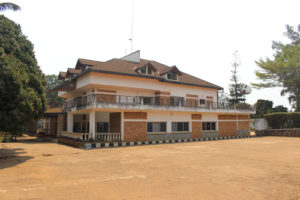 from Kigali city center. It is the former state house and is where Rwanda’s former president Juvenal Habyarimana lived before his Falcon 50 plane was shot down on 6th April 1994. The plane landed at the presidential compound and the debris can still be seen to this day. When information reached that the presidents had been shot, Hutu extremists launched a full-scale genocide which resulted in the deaths of over 800,000 Tutsi. The resident Guide will take you around the house and show you the former presidents secret rooms, a presidential nightclub and more.
from Kigali city center. It is the former state house and is where Rwanda’s former president Juvenal Habyarimana lived before his Falcon 50 plane was shot down on 6th April 1994. The plane landed at the presidential compound and the debris can still be seen to this day. When information reached that the presidents had been shot, Hutu extremists launched a full-scale genocide which resulted in the deaths of over 800,000 Tutsi. The resident Guide will take you around the house and show you the former presidents secret rooms, a presidential nightclub and more.
Urutare Rwa Ngarama: This large rock is found in the district of Gatsibo. The rock has distinct features and is believed to have been created to King Ruganzu Ndoli. Ruganzu was an ancient king in Rwanda. According to the local legend, King Ruganzu placed magic features on the rock allowing it to vibrate when hit by a stone, metal or when a human foot touched it. The King was thought to wield mystical powers that he used to control his subjects.
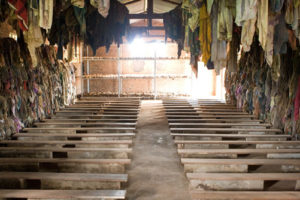 Ntarama Genocide Memorial: This memorial site is found in southern Kigali. About 5,000 people are buried outside a church. The site has been revamped with beautiful scenery and gardens. Even then, the human skeletons and personal belongings of the genocide victims can still be seen in the interior. They were left inside deliberately to remind younger generations of a painful era in the country’s history.
Ntarama Genocide Memorial: This memorial site is found in southern Kigali. About 5,000 people are buried outside a church. The site has been revamped with beautiful scenery and gardens. Even then, the human skeletons and personal belongings of the genocide victims can still be seen in the interior. They were left inside deliberately to remind younger generations of a painful era in the country’s history.
Ryamurari: This impressive archeological site is found in Nyagatare district (on top of a hill). It served as the capital of the Ndorwa Kingdom before it became part of Rwanda. Archeologist have unearthed cow bones, cow dung and grinding stones which indicate that the people who lived there were 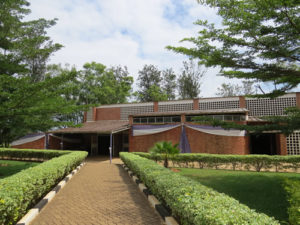 both cattle keepers and practicing subsistence agriculture. Tourists and geologist visit the site to admire the ancient structures and amazing earth-works.
both cattle keepers and practicing subsistence agriculture. Tourists and geologist visit the site to admire the ancient structures and amazing earth-works.
Nyamata Genocide Memorial: Nyamata is one of the most visited genocide memorial sites. About 10,000 people had entered the Nyamata Catholic church hoping that the killers would have mercy on them. Instead, grenades were thrown at them or to open the doors and after which everyone was shot/hacked to death. A guided tour around the site takes you inside the church to see bullet holes, bloodstained clothes and more. After touring inside the church, visitors are taken to an outside mass grave where the people were buried.
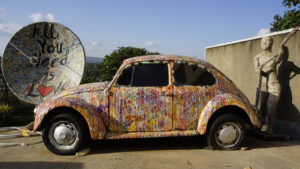 Inema Art center: This Center was established by two brothers in Kigali. It is one of the most visited artisan centers in Kigali. The Inema Center brings together some of the finest local artist as well as young pretenders who are still learning the trade. Visit this Center if you are interested in distinct Rwanda art that describes the countries culture, wildlife, natural resources and physical features. Expect to be entertained by resident Intore cultural performers or attend a fashion show if you visit on a good day.
Inema Art center: This Center was established by two brothers in Kigali. It is one of the most visited artisan centers in Kigali. The Inema Center brings together some of the finest local artist as well as young pretenders who are still learning the trade. Visit this Center if you are interested in distinct Rwanda art that describes the countries culture, wildlife, natural resources and physical features. Expect to be entertained by resident Intore cultural performers or attend a fashion show if you visit on a good day.
Bugesera Reconciliation village: For many decades, there was tension between the Hutus and Tutsi. This tension grew into unimaginable proportions prior to April 1994. When president Juvenal 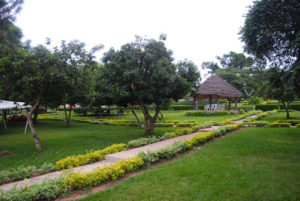 Habyarimana’s plane was shot down in April 1994, it sparked one of the worst genocides in recent history. The government at the time used tribal sentiments to force the Hutus to take up arms against the minority Tutsi. The Hutu extremists started killing people they had known for years as friends, lovers and neighbors in the cruelest ways.
Habyarimana’s plane was shot down in April 1994, it sparked one of the worst genocides in recent history. The government at the time used tribal sentiments to force the Hutus to take up arms against the minority Tutsi. The Hutu extremists started killing people they had known for years as friends, lovers and neighbors in the cruelest ways.
After the genocide and with a new government, there was still a lot of silent hatred as people remembered how their loved ones were killed by people they knew. The new government did everything 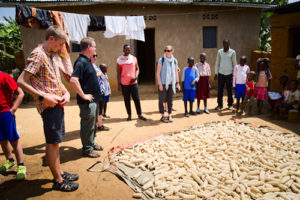 possible encourage reconciliation and unity. One of the great efforts to heal wounds was the creation of the Bugesera Reconciliation Village. Those who had found it difficult to forgive one another due to the 1994 genocide could come to this place for reconciliation and leave as friends. People still holding grudges against others can come to the village and see examples of other successful reconciliations. As a tourist, you can also visit Bugesera Reconciliation village and learn the power of forgiveness even under the most difficult circumstances.
possible encourage reconciliation and unity. One of the great efforts to heal wounds was the creation of the Bugesera Reconciliation Village. Those who had found it difficult to forgive one another due to the 1994 genocide could come to this place for reconciliation and leave as friends. People still holding grudges against others can come to the village and see examples of other successful reconciliations. As a tourist, you can also visit Bugesera Reconciliation village and learn the power of forgiveness even under the most difficult circumstances.
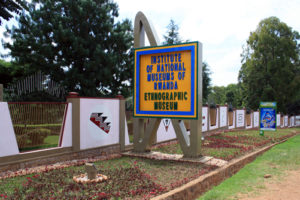 Ethnographic Museum: Located in the city of Huye (132 kilometers away from Kigali), this museum was a gift by the Belgium government to the people of Rwanda during a celebration to mark 25 years of independence in 1987. The Museum stores some of the best ethnographic collections in Africa. From its seven galleries, visitors can learn a lot about Rwanda’s history and culture. The Museum showcases, traditional tools, farming instruments, traditional beer and woodworks. There are also sections for local poetry, traditional dance instruments and hunting tools.
Ethnographic Museum: Located in the city of Huye (132 kilometers away from Kigali), this museum was a gift by the Belgium government to the people of Rwanda during a celebration to mark 25 years of independence in 1987. The Museum stores some of the best ethnographic collections in Africa. From its seven galleries, visitors can learn a lot about Rwanda’s history and culture. The Museum showcases, traditional tools, farming instruments, traditional beer and woodworks. There are also sections for local poetry, traditional dance instruments and hunting tools.
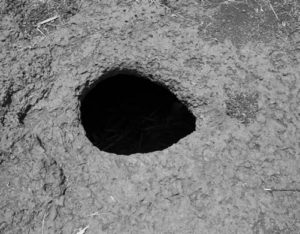 Utubindi twa Rubona: This is another impressive historical and archaeological site in Rwanda. It is found in Tubindi Village (Gatsibo district) – 4 kilometers away from the main road in Kayonza Nyagatere. The site is home to 7 unique clay pots which are believed to have been excavated by King Ruganzu 11 as he traveled with his men from Karagwe. The King used the clay pots to draw water for his thirsty men. Apart from viewing the clay pots, the site also has remains of the King.
Utubindi twa Rubona: This is another impressive historical and archaeological site in Rwanda. It is found in Tubindi Village (Gatsibo district) – 4 kilometers away from the main road in Kayonza Nyagatere. The site is home to 7 unique clay pots which are believed to have been excavated by King Ruganzu 11 as he traveled with his men from Karagwe. The King used the clay pots to draw water for his thirsty men. Apart from viewing the clay pots, the site also has remains of the King.
National Liberation Park Museum: Locally known as “Umurindi w’Intwari”, this museum helps tell the story of the great struggles, determination and courage of the Rwanda Patriotic Front (RPF) as 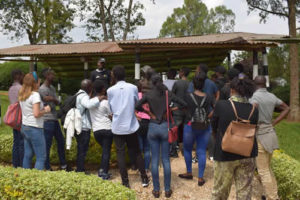 they attempted to stop the genocide and liberate the country in 1994. It is found 80 kilometers away from Kigali. Visiting this museum is also another excellent way of understanding the events leading to, during and after the 1994 genocide. There are many artifacts, texts, videos and documents like the Arusha Agreement. This Agreement shows the efforts put in place bring government and RPF forces to a cease fire even before the start of the genocide. The museum sits on a bunker which was the headquarters of the RPF leader Paul Kagame.
they attempted to stop the genocide and liberate the country in 1994. It is found 80 kilometers away from Kigali. Visiting this museum is also another excellent way of understanding the events leading to, during and after the 1994 genocide. There are many artifacts, texts, videos and documents like the Arusha Agreement. This Agreement shows the efforts put in place bring government and RPF forces to a cease fire even before the start of the genocide. The museum sits on a bunker which was the headquarters of the RPF leader Paul Kagame.
Campaign Against Genocide Museum: This Museum also helps educate people about the role of the Rwanda Patriotic Front (RPF) in ending the 1994 genocide. It is located close to the airport and the 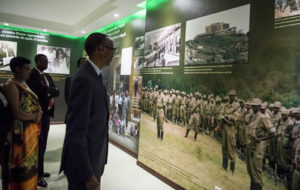 parliamentary building in Kigali. The Museum describes how the RPF planned to stop the genocide as soon as it became clear that Hutu extremists were intending to wipe out the Tutsi minority and that the UN troops were not going to defend the targeted people. Although the RPF did everything they could to stop the genocide, it was not enough to stop the killing of over 800,000 Tutsis and moderate Hutus. Visitors to the Campaign Against Genocide Museum can still see some of the guns used during the war between the RPF and government forces.
parliamentary building in Kigali. The Museum describes how the RPF planned to stop the genocide as soon as it became clear that Hutu extremists were intending to wipe out the Tutsi minority and that the UN troops were not going to defend the targeted people. Although the RPF did everything they could to stop the genocide, it was not enough to stop the killing of over 800,000 Tutsis and moderate Hutus. Visitors to the Campaign Against Genocide Museum can still see some of the guns used during the war between the RPF and government forces.
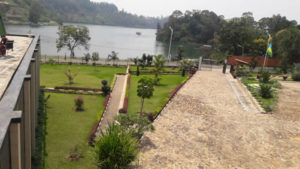 Environmental Museum: This is the first environmental museum which showcases renewable and non-renewable energy in the continent. The Museum is found on the shores of Lake Kivu, close to the border with the democratic Republic of Congo. The Museum helps collect all kinds of local plants with explanations of their use (as food or medicine). The museum organizes educational tours for those who are interested in learning about how protecting the environment contributes to a country’s overall development.
Environmental Museum: This is the first environmental museum which showcases renewable and non-renewable energy in the continent. The Museum is found on the shores of Lake Kivu, close to the border with the democratic Republic of Congo. The Museum helps collect all kinds of local plants with explanations of their use (as food or medicine). The museum organizes educational tours for those who are interested in learning about how protecting the environment contributes to a country’s overall development.
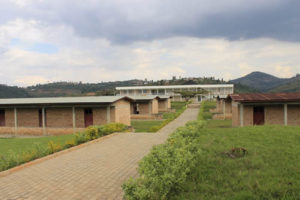 Murambi Genocide Memorial: This genocide memorial site is located in the southwestern part of the country. Because of its remote location, Murambi may not be the most visited. However, over 50,000 genocide victims are buried here which is a sign that it is second to none in reminding us of the horrors of April 1994. The Murambi Genocide Memorial site is found at a former technical school which became a killing ground for the interahamwe (Hutu extremists).
Murambi Genocide Memorial: This genocide memorial site is located in the southwestern part of the country. Because of its remote location, Murambi may not be the most visited. However, over 50,000 genocide victims are buried here which is a sign that it is second to none in reminding us of the horrors of April 1994. The Murambi Genocide Memorial site is found at a former technical school which became a killing ground for the interahamwe (Hutu extremists).
